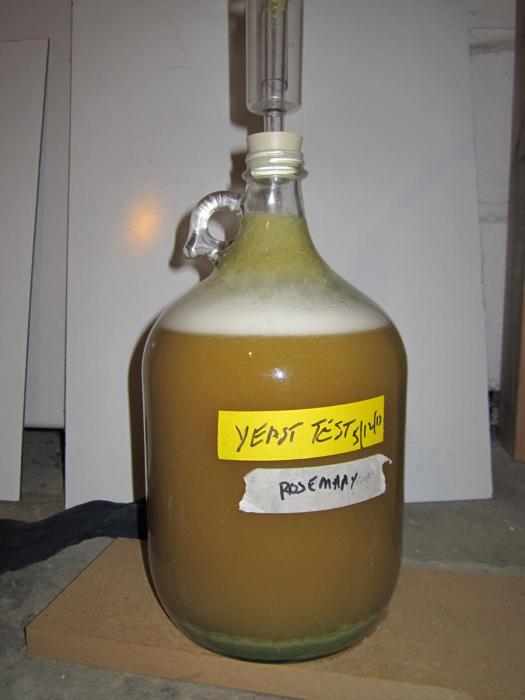beergolf
Well-Known Member
I have been interested in trying to capture some wild yeast for a long time. A couple of months ago I tried it and had success.
I made up some 1.020 wort. Put about 250 ml in each of three mason jars. Covered them with cheesecloth. I put on jar under a large pine tree, the next jar in a pear tree that was flowering, the third jar I put near a big rosemary plant/bush that was. also flowering. I let them sit overnight, then brought them inside and covered them with sanitized foil.
First jar was a big fail. All I got was mold. Second jar (pear tree) fermented out, smelled like yeast, so I stepped it up. After several days I put the flask in the fridge to crash it out. The yeast just would not drop out, but stayed in suspension. It smelled ok but I decided not to use this yeast. The third jar (rosemary) was a big success. I let it ferment out for a little over a week. Smelled very good, fruity/spicy. Like a good Belgian or saison. I stepped it up and it went crazy. So I stuck it in the fridge to drop the yeast out. Smelled fantastic. I decided to make a very simple one gallon extract batch. I used one lb. of pils DME and 1/2 lb wheat DME. I added some Strisselspalt hops to bitter it a little. It took off like a rocket, within 5 hours I put on a blow off tube because it looked it was going to blow. It took the brew down to 1.004.
Bottled it up and it tasted great at bottling time. Now three weeks later and fully carbed up it is a very good brew. It is a little fruity with some spice. This will make a very good saison. I washed the yeast and now have 5 small jars of this yeast for future brews. On Saturday I am going to do a 5 gallon batch.
Here is a pic of the fermenter at 5 hours after pitching, and a pic of the finished brew.
If you have ever thought about trying to capture wild yeast it is worth a try. I had two failures, but this one success made it worth while.


I made up some 1.020 wort. Put about 250 ml in each of three mason jars. Covered them with cheesecloth. I put on jar under a large pine tree, the next jar in a pear tree that was flowering, the third jar I put near a big rosemary plant/bush that was. also flowering. I let them sit overnight, then brought them inside and covered them with sanitized foil.
First jar was a big fail. All I got was mold. Second jar (pear tree) fermented out, smelled like yeast, so I stepped it up. After several days I put the flask in the fridge to crash it out. The yeast just would not drop out, but stayed in suspension. It smelled ok but I decided not to use this yeast. The third jar (rosemary) was a big success. I let it ferment out for a little over a week. Smelled very good, fruity/spicy. Like a good Belgian or saison. I stepped it up and it went crazy. So I stuck it in the fridge to drop the yeast out. Smelled fantastic. I decided to make a very simple one gallon extract batch. I used one lb. of pils DME and 1/2 lb wheat DME. I added some Strisselspalt hops to bitter it a little. It took off like a rocket, within 5 hours I put on a blow off tube because it looked it was going to blow. It took the brew down to 1.004.
Bottled it up and it tasted great at bottling time. Now three weeks later and fully carbed up it is a very good brew. It is a little fruity with some spice. This will make a very good saison. I washed the yeast and now have 5 small jars of this yeast for future brews. On Saturday I am going to do a 5 gallon batch.
Here is a pic of the fermenter at 5 hours after pitching, and a pic of the finished brew.
If you have ever thought about trying to capture wild yeast it is worth a try. I had two failures, but this one success made it worth while.






